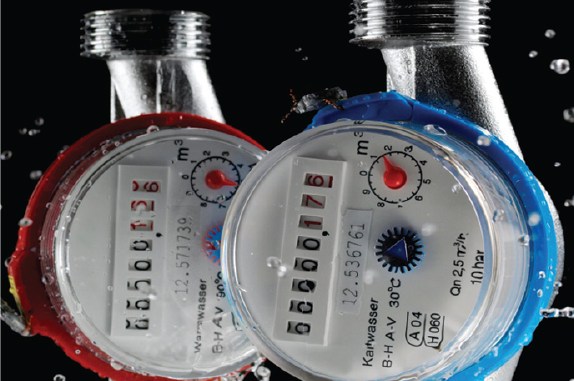
Factors such as leakages and non-billed consumption due to damaged meters have become a key concern for cities in India. These factors cause a mismatch in water supply and consumption levels, thereby resulting in high non-revenue water (NRW). In India, the share of NRW in the total water supplied ranges between 40 per cent and 45 per cent on an average. Some utilities such as the Delhi Jal Board and the Kerala Water Authority have NRW levels in the range of 50-60 per cent.
Currently, the majority of Indian cities have non-metered water supply connections. Water utilities charge either a fixed water tariff based on ferrule size or a fixed percentage of the property tax. Cities such as Delhi, Nagpur, Bengaluru, Chennai and Ahmedabad have partial metered water connections. Most urban local bodies (ULBs) have installed manual water meters that are currently lying dysfunctional. In the past four to five years, with the launch of government programmes such as AMRUT, the Jal Jeevan Mission and the Smart Cities Mission, initiatives have been taken to ensure 100 per cent metering of water supply, and replace manual meters with advanced metering infrastructure (AMI).
Initiatives undertaken
The management of water supply services has become difficult for many ULBs. As a result of this, many city corporations have started taking up projects to improve water supply and repair damaged pipeline infrastructure in their respective areas.
The Nagpur Municipal Corporation (NMC) has replaced over 680 km of pipelines under the 24×7 water supply project and around 0.3 million new water meters have been installed. The NMC is planning to further install around 60,000 new meters in the city.
The Chennai Metropolitan Water Supply and Sewerage Board (CMWSSB) has started installing digital water meters with automated meter reading (AMR) on commercial properties. As of February 2021, around 5,300 AMR meters were provided to commercial properties such as hotels, industries and educational institutions. The project is being implemented under the Smart Cities Mission at an estimated cost of Rs 95 million. The CMWSSB has also planned to extend the metering system to consumers in core areas of the city in the next phase.
In order to help reduce water losses, Yokogawa India has signed a five-year contract with Itron, Inc., an American technology company, to support Satna’s smart city development. It has deployed Itron, Inc.’s water operations management solution in the city. The water operations management solution is a suite of offerings meant to help utilities increase operational visibility and reduce losses. The deployment is part of the Satna Smart City project, where Satna Smart City Development Limited helps monitor and reduce water loss in the city’s water transmission network. With the solution, Satna plans to leverage its existing infrastructure to detect NRW losses. The city will use supervisory control and data acquisition (SCADA) with Itron’s hydraulic modelling to optimise the water distribution network, identify leaks and help with water demand fluctuations.
Many other city corporations and water boards have planned a plethora of initiatives to reduce NRW levels in their cities. The Nashik Municipal Smart City Development Corporation has decided to replace 7,000 old water meters with new SCADA meters as a pilot project in industrial areas within the jurisdiction of the Nashik Municipal Corporation. Additionally, the Noida Authority is planning to start the installation of smart water meters. A total of 5,000 meters will be installed in the first phase, under a pilot project. The detailed plan will be finalised and executed for the project and will be handed over to the authority after 10 years.
In a bid to achieve 100 per cent metering of water supplied, the Brihanmumbai Municipal Corporation (BMC) has planned to review its existing policy on water meters. It plans to replace its older meters with AMR meters. Between 2010 and 2016, the BMC installed 95,000 AMR meters in the city. Following a spike in complaints about faulty reading from mechanical meters and cases of theft, the corporation has decided to revise the rules and penalties for testing, repair and theft of water meters in the city. Under the revised rules, if a meter is not working properly or has been tampered with, it will be removed by the BMC for testing.
In sum
India aims to reduce its NRW levels below 20 per cent in the coming years. Water authorities across the country have started taking initiatives to reduce NRW levels and plug leakages, using both conventional and advanced techniques. Going forward, remote monitoring and control technologies such as SCADA should be used to not only conserve and maintain the quality of water but also to create a sustainable and scalable water economy for water utilities in the future.



